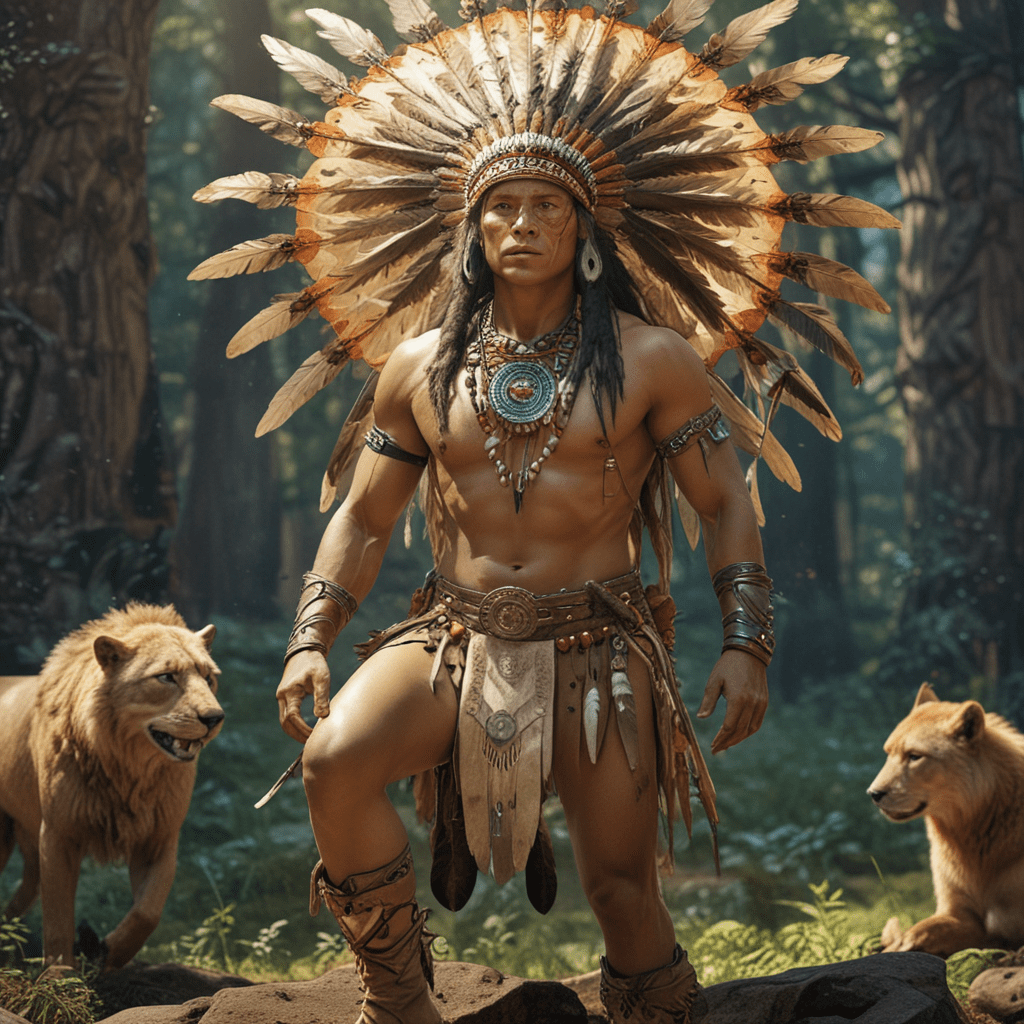Creation Stories in Native American Mythology
Creation stories play a pivotal role in Native American mythology, showcasing the diverse beliefs and cultural practices of the indigenous tribes that populate the Americas. These narratives provide profound insights into the origins of the world, the creation of humanity, and the relationship between humans and the natural world. Among the many creation stories found in Native American mythology, five prominent themes stand out:
I. The Emergence Myth
The emergence myth is a widely shared belief among Native American tribes that humans emerged from an underworld or a subterranean realm. According to this myth, the earth was formed as an island floating in a vast cosmic ocean. The first humans emerged from a hole or a cave in the earth's surface, marking the beginning of life on the planet.
II. The Underwater Myth
The underwater myth is prevalent among tribes living near bodies of water, such as the Great Lakes, the Pacific Ocean, and the Gulf of Mexico. It narrates the creation of the world from a primordial underwater realm. In this myth, the earth is formed when mud or sand is brought up from the bottom of the ocean by supernatural beings, such as animals or deities.
III. The Trickster Myth
The trickster myth features a mischievous and enigmatic character who often plays a pivotal role in the creation of the world. The trickster, known by various names such as Coyote, Raven, or Spider, engages in trickery, humor, and sometimes destructive behavior. Through their actions, the trickster shapes the world, introduces fire, creates humans, and establishes social norms.
IV. The Earth-Diver Myth
The earth-diver myth is common among tribes with close ties to water. It describes the creation of the world through the actions of a diving animal, such as a muskrat, a turtle, or a duck. In this myth, the diving animal retrieves a small piece of earth or mud from the bottom of a primordial body of water, which then expands to form the world we know today.
V. The Sun Myth
The sun myth revolves around the creation of the sun and its importance to life on earth. In many Native American cultures, the sun is seen as a powerful deity that brings light, warmth, and sustenance. The sun myth often involves a hero or a trickster who journeys to the sky world to retrieve the sun and bring it to the earth.
VI. The Moon Myth
The moon myth holds great significance in Native American cultures, attributing a profound impact on the natural world and human affairs. The moon, often considered a female deity or a symbol of fertility and transformation, is believed to influence the tides, seasons, and the cycles of life. In some myths, the moon is created when a piece of the sun is broken off, while in others, it emerges from the depths of the ocean.
VII. The Star Myth
The star myth encompasses a wide range of beliefs about the creation and nature of stars. Native American tribes often saw stars as celestial beings, ancestors, or guiding spirits. Some myths describe stars as being created from the sparks of a primordial fire, while others depict them as holes in the sky that allow light from the heavens to shine through. Stars were often used as navigational aids and to mark significant events in the calendar.
VIII. The Thunder Myth
The thunder myth revolves around the creation and significance of thunder and lightning. In many Native American cultures, thunder is associated with powerful deities or spirits that control the weather and protect the earth. Thunderstorms were often seen as symbols of purification and renewal, bringing life-giving rain and cleansing the world. The myths surrounding thunder often involve epic battles between supernatural beings, resulting in the creation of thunder and lightning.
IX. The Wind Myth
The wind myth explores the origins and nature of the wind. Native American tribes often attributed the wind to the actions of supernatural beings, such as spirits or deities, who used it to communicate with humans or shape the landscape. Some myths depict the wind as a messenger, carrying prayers and offerings to the heavens, while others see it as a powerful force that can bring both destruction and renewal. The wind was often considered an essential element for survival, aiding in hunting, travel, and the dispersal of seeds.
X. The Transformation Myth
The transformation myth narrates stories of individuals or beings who undergo significant changes in their form or nature. These transformations can be physical, psychological, or spiritual and often symbolize a profound shift in the character's life journey. Transformation myths often involve encounters with supernatural forces, quests for personal growth, or battles against inner demons. Through these transformations, individuals gain new knowledge, wisdom, and a deeper understanding of their place in the world.
Frequently Asked Questions (FAQs)
Q1. What is the most common creation myth in Native American mythology?
A1. The emergence myth, which depicts humans emerging from an underworld or a subterranean realm.
Q2. What role does the trickster play in Native American creation stories?
A2. The trickster, such as Coyote or Raven, often introduces fire, creates humans, and establishes social norms through their mischievous and enigmatic actions.
Q3. How do stars figure in Native American mythology?
A3. Stars are often seen as celestial beings, ancestors, or guiding spirits, representing navigation aids and marking significant calendar events.
Q4. What is the significance of the wind in Native American creation narratives?
A4. The wind is often attributed to supernatural beings and seen as a messenger, carrying prayers and offerings, or as a powerful force for destruction and renewal.
Q5. How do transformation myths differ from other types of creation stories?
A5. Transformation myths focus on individuals or beings undergoing significant changes in form or nature, symbolizing a profound shift in their life journey and gaining new wisdom.



